Welcome everyone to another spooky October update. Actually, I'm not really talking anything spooky this week; that can wait for the end of the month. Instead, I wanted to start on two mini-topics before launching into the rest of the Summary and a couple of in-depth pieces on the games I've been playing this week. First, though: how crazy is it that we're getting Super Mario Odyssey, Wolfenstein II: The New Colossus, Assassin's Creed Origins and Stranger Things season 2 on the same day? My TweetDeck is going to tear itself apart trying to herd all those new releases into a handful of manageable conversations.
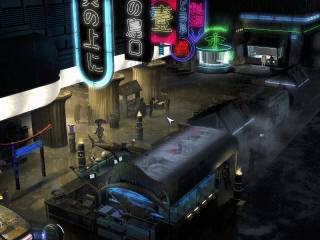
Talking of deck herds, I was fortunate enough to watch the new Blade Runner 2049 the other day. It occurred to me that the biggest problem facing the film (which still managed to be excellent) was not trying to live up to the original 1982 Blade Runner, but to live up to the huge amount of fiction it inspired in various strains of media in the thirty-five years since. You could argue that the original Blade Runner was more style over substance, with a lot of languid shots of its fantastic setting with a slow and predictable detective story. I'm a fan of the film, but it doesn't really have a lot of twists and surprises common to the noir setting: RedLetterMedia said as much during their review of the new movie, and I think what's really stuck with us - more so than the whole idea that androids become indistinguishable from humanity at some point, until only elaborate psychological tests and specialized detectives with finely-tuned instincts can suss them out - is the setting and the atmosphere. It's that potent and memorable aesthetic that has endured, and like the vivid image of the alien xenomorph or the shapeshifting T-1000, would go on to inspire the visual style of many pieces of sci-fi to follow. That, of course, includes video games.
I think you could go crazy trying to put together a list of every game that was inspired by the look of Blade Runner, or inspired by another book or movie that was in turn influenced by same. There's Snatcher, of course, which is probably the most overt homage given Kojima's predilection for Hollywood cinema. You also have the Shadowrun universe, which attempted to broaden the neon streets of the near-future to include magic and the introduction of fantasy races. I suppose mentioning the official Blade Runner game would be kind of a cheat. Even recent Indie games like VA-11 Hall-A and Read-Only Memories have drawn from that rainy nocturnal neo-noir setting, though given how both draw from multiple sources we could be looking at several degrees of separation. In addition, the film's influence could also be said to extend to franchises like Mega Man, which depict similar metropolitan areas of the future filled with "more human than human" robots, or the first Mass Effect, which made the conscious decision to create a soundtrack that closely resembled the Vangelis compositions of Blade Runner. The new movie wasn't just trying to do right by the original movie, but everything that came after that expanded or evolved the concepts and visuals for their own distinct contributions to the sci-fi genre. It was a hell of a task, and I think Denis Villeneuve did an admirable job with the new film, and in particular for wrangling a really good performance out of crotchety movie star Harrison Ford.
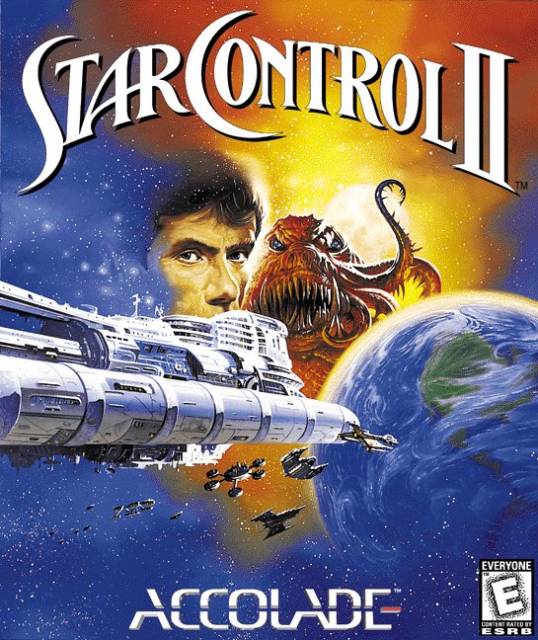
Speaking of controlling stars, I was happy to hear the news that the original designers of Star Control 2 were beginning work on a "true" sequel - I haven't played Star Control 3, but its reputation is spotty - and that it's coupled with a prequel that's also on the way. From the impression I got from the Beastcast, however, it doesn't seem like anyone really played or remembers the game much at all, with the duders taking a few loose stabs at it being like Master of Orion before giving up and moving on (Vinny, in his infinite cordiality, mostly just brought it up to bring joy to the Star Control fans in their audience). I figured I'd set the record straight and try to describe how Star Control 2 is this singular, wonderful space-faring game and why its legacy is still relevant today.
Boiling the game down to its essentials, what Star Control 2 is a space exploration and trading game with a top-down real-time shoot 'em up combat mode. For the most part, you're simply exploring the cosmos, finding valuable minerals to sell to the avaricious alien race the Melnorme in exchange for upgrades to your flagship and hints to the whereabouts of homeworlds of friendly species you could make contact with. The story is revealed gradually, along with this universe's many secrets and alien races to encounter, but begins with a small pocket of human explorers finding and fixing up an ancient alien vessel capable of almost limitless potential. When they return to the Solar system years later, the captain of this ship - the player character, who had been a child on the expedition - finds Earth trapped under a "slave shield" erected by the Ur-Quan: a highly advanced insectoid race that has grown deeply distrustful of other races, and has either enslaved them or imprisoned them for their own safety. A lot of the game is spent making first contact, or re-establishing contact to the races humanity knew about before the Ur-Quan swept through them all, as the player pieces together the current state of the galaxy and how they might emancipate the human race from their current predicament.
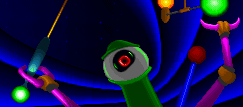
While the exploration and resource-gathering is fun enough on their own, the game's X factor is definitely in its adventure game-like interactions with the aliens. Some are happy to help if you help them first, providing ships which add to the player's own little fleet that they can use in combat, and adding their support to humanity's cause. Some alien races are less eager to help, in particular the Ur-Quan if you're unfortunate enough to encounter any or one of their many vassals like the thuggish Thaddish or the sinister arachnid Ilwrath. Yet, because this is an adventure game, there are ways to take the Thaddish and Ilwrath out of the picture with the right connections and technology. The galaxy is full of strange encounters, like the omnicidal Slylandro probes that purport to come in peace but attack almost immediately and without provocation, or the enigmatic Arilou who exist in a dimension outside of regular space and claim to have been observing humanity for centuries. The hilarity of the Spathi, the allure of the Syreen, or the threat of the Ur-Quan. The implied horror of the Orz, the tragedy of the Shofixti, or the cuteness of the Zoq-Fot-Pik. It's these encounters (of the third kind) to make, and the mysteries concerning them to solve, that make Star Control 2 what it is, at least in my view. Even if these new games turn out to be weak imitations, I'll still be content.
Talking about weeks and content, let's check out the sole blog this time around:
- The Indie Game of the Week for this particular seven day period was Child of Light, completing Ubisoft's "UbiArt Framework" set of smaller games its studios published in 2014. While I had some superficial misgivings about the game (all that annoying rhyming! It got my blood pressure climbing!) both the overall presentation and its core RPG gameplay were stellar. Playing on the Expert mode was definitely the way to go, because there were certain boss fights that really forced me to consider all my options. That's often the trouble with RPGs with large casts of playable characters: you simply find the two or three party members you're comfortable with and don't explore the potential of everyone else in your employ. Since Child of Light let you switch party members mid-battle, I figured out how to get the most out of my debuffer, my elemental-focused mage, my physical tank, my fast ranged attacker and the protagonist's own versatility. The turn-order manipulation, the use of the Firefly familiar to slow enemies down, the use of stat-boosting "oculi" crystals, and judging the length it took for certain skills to activate; the game has more layers to it than I expected, and I had a great time completing it last night.
Addenda
In addition to Child of Light, I've made quite a bit of progress on two other games, one of which I'm going to have come back to when I've figured more of it out.
Rogue Trooper
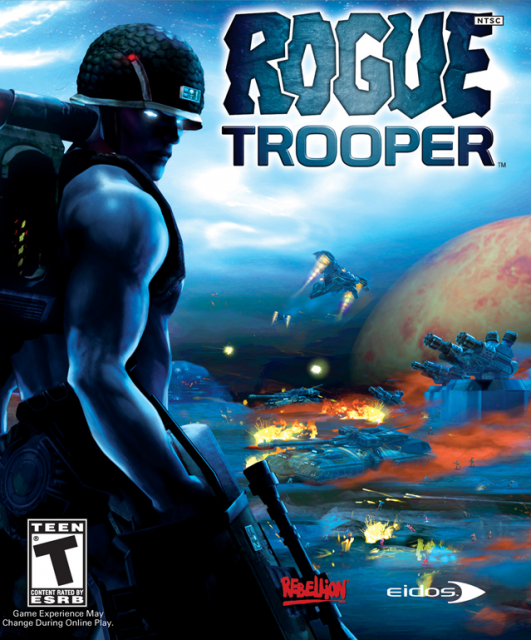
October's a huge month for releases, so you can be forgiven for missing the news of a new "redux" edition of a PS2-era game that everyone kinda skipped out on, largely perhaps because it was based on a license no-one outside of the UK knows much about and released on the first full year following the Xbox 360's debut. Safe to say attentions were definitely elsewhere. Rogue Trooper is worth revisiting, however, because it has a lot of smart ideas that no other game really bothered to capitalize on and an imaginative premise of genetically modified soldiers on a toxic alien planet that a proper revamped version - one that adapts to the times as far as cover mechanics and responsive first- and third-person shooter gamepad controls are concerned - could reintroduce to the world.
Most of Rogue Trooper's strengths have already been explicated in full when I wrote up the game's The Top Shelf entry a few weeks ago, but I still argue that the game was ahead of its time in a lot of crucial ways. Along with a shorter campaign that doesn't outstay its welcome - perhaps less a draw for a full-price retail PS2 game but ideal for the upcoming budget-priced redux edition - the game's conceit of creating your own ammo and resources out of a finite supply of materials whenever you wish, setting up your main gun as an automated turret or a holographic decoy as distractions while you sneak behind enemy encampments and stealth kill them, or a literal on-rails section where you're protecting a train via turrets on its sides and top are all examples of the game really going the extra mile to keep itself fresh. I'd really like to see that bizarre skyline, dominated by a black hole that is busily pulling in space detritus and star matter, in HD as well. Hopefully Giant Bomb finds the time to cover it this week; I know they're going to be plenty busy already.
As for its place in The Top Shelf rankings, I'm not sure it's going to make the cut, but it's definitely on the shortlist. Of the handful of shooter games I've covered for the second round, including the likes of Robotech: Invasion, Headhunter, 007: Agent Under Fire, and the two Medal of Honor games Frontline and Rising Sun, it's easily my favorite. That could just be the 2000 AD fanboy in me talking, however.
Torment: Tides of Numenera
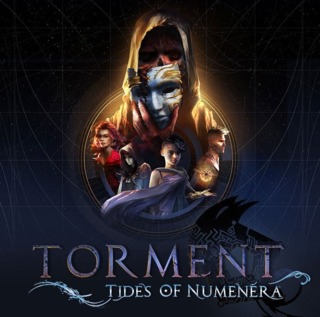
Hoo boy, where to even start with this one? Intended as a spiritual sequel to Black Isle Studios's RPG thinker Planescape: Torment, with contributions from its original writer Chris Avellone, Torment: Tides of Numenera maintains the spirit of the original but transplants it to an even more inscrutable campaign setting. While Planescape was this multitudinous nexus sitting between the more traditional D&D dimensions that include the likes of the Forgotten Realms, the Numenera universe was one created wholecloth by former D&D adventure module creator Monte Cook for his own table-top setting, one set on a distant future Earth that has seen dozens of human empires and civilizations rise and fall. Some of these civilizations reached a technological advancement level that far eclipses our own as well as that seen in the game's present day, with humanity exploring and integrating with the cultures of various space-faring alien races and extradimensional beings and crafting marvels that continue to baffle the present day scholars and academics, who huddle together in laboratories and libraries built out of the hulls of spaceships people have long since lost the knowledge to operate. The present day era of the game is one strongly affected by all the artifacts of these past lying around, playing heavily into Arthur C. Clarke's concept of "Any sufficiently advanced technology is indistinguishable from magic". These artifacts of ancient civilizations of varying technological levels are collectively known as "numenera", and are the source and basis of the setting's many mysteries and adventures.
In this already challenging-to-comprehend setting, the player is provided a deeper mystery inspired more directly by the original Torment. As the amnesiac scion of a godlike immortal being known as "The Changing God", the player character seeks out other "castoffs" - superpowered bodies that the Changing God creates, briefly inhabits and eventually abandons for even better "models" like some kind of psychic hermit crab, allowing new consciousnesses to form in those bodies in his absence - for a way to defeat "The Sorrow": an ever-present existential threat to the Changing God, and by extension his castoffs, who hounds them to their dying day. The Sorrow largely exists in the player character's mind: an expansive labyrinth that also includes within it the many memories of the Changing God, leading the protagonist and their companions to perhaps think that they themselves are the Changing God who has yet to abandon this body, and instead lies dormant within somehow. Yet it is also very real, and continues to be a sword of Damacles threatening to undo the protagonist unless they find an effective way to fight it.
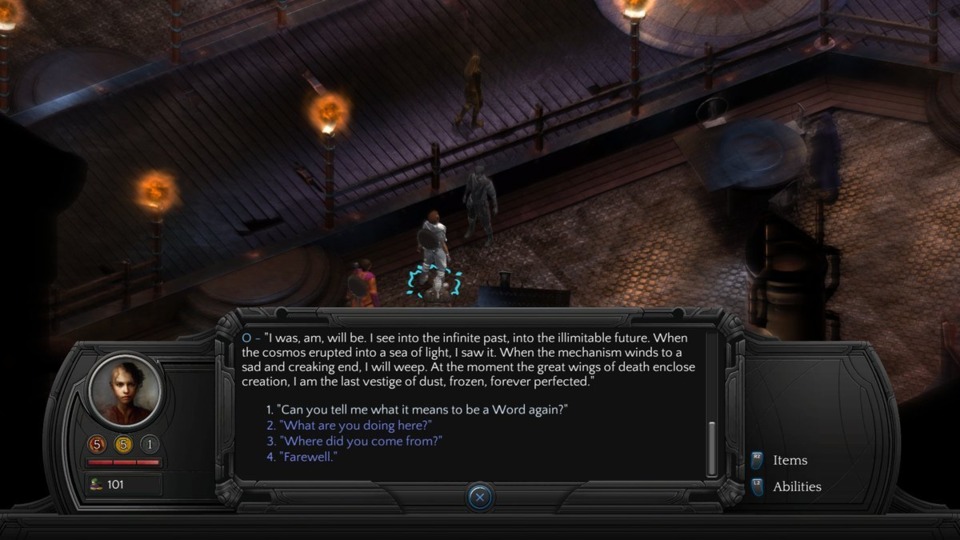
It's all heady stuff, and the first dozen or so hours of the game has largely involved a lot of necessary world-building and exposition. For instance, I woke up in a region called the Reef of Fallen Worlds, where derelict alien spaceships lie in swamps next to futuristic weapons of war and extradimensional hazards that leaked through fissures in reality that are as likely to vaporize you than to give up their secrets or treasures. Nearby was the settlement of Sagus Cliffs, which was once protected by a forcefield system set up by the Changing God thousands of years ago that has mostly fallen into a state of disrepair. You are introduced to characters like the Genocide - the last surviving remnant of a warrior sect that once threatened humanity, who is now kept around as an ageless and psychologically compliant reminder of their failure - and a cult dedicated to the Changing God who is ecstatic to meet you. You also encounter party members here like the dashing pansexual rogue Tybir, the worn down and disillusioned priest Aligern, the multi-dimensional conniving scholar Callistege, the literally radiant and clueless adventurer Erritis, and the strange orphan girl Rhin, who takes some work before she's effective in battle and hints to some deeper plot significance.
It's safe to say that the game has been hewing close to the Torment blueprint. The game uses the Pillars of Eternity engine, in much the same way that the original Planescape: Torment was based on Baldur's Gate's Infinity Engine, to which the Pillars of Eternity engine owes a large debt. Death is never an impediment, as your body can regenerate from almost any injury and you simply drop back into your mindscape temporarily whenever critically damaged. Most of your advancements come not from quests or combat, but from education: you gain experience and stat points as you learn more about your past self (or selves), and I've only been involved in a handful of fights so far. In fact, most of my time has been spent reading and answering multiple choice questions, not unlike a text adventure, and I find myself generally enjoying the change of pace.
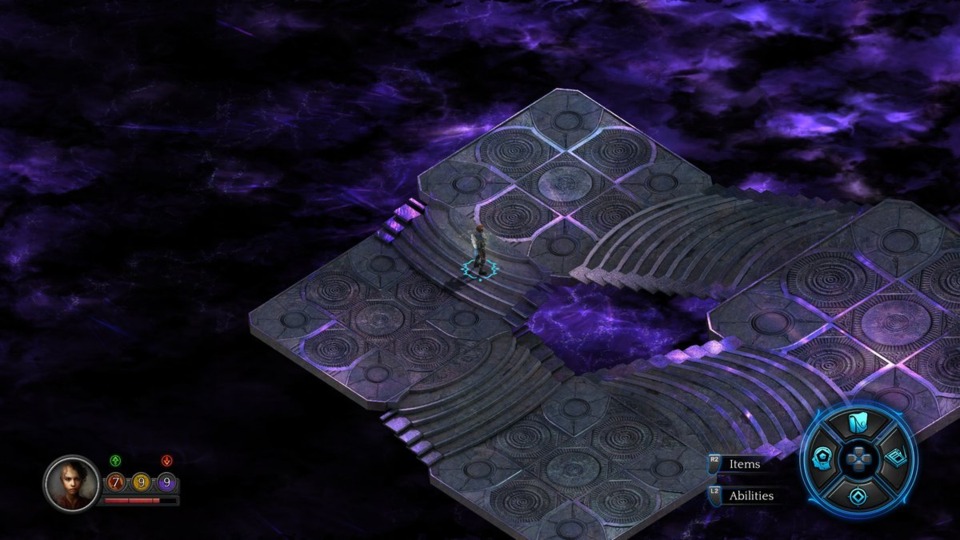
It's when I do find myself in combat, which the game calls "a crisis" which is sort of cute, that the game truly diverges from Planescape: Torment. Rather than the standard Infinity Engine real-time combat that the player can pause for on-the-fly strategizing, Tides of Numenera instead has this turn-based format which incorporates an XCOM-like system of either moving and attacking, attacking and moving, or moving twice as far without attacking. Turn order is (I assume) generated by rolling initiative, and character placement is key for making area of effect spells and abilities more effective. There's also a game-wide system that I don't think I've seen in a video game before but several times in table-top gaming, where you have a certain pool of points for the three major stats - "might" for physical labor, "speed" for dextrous actions and thief skills, and "intellect" for spells and speech skills - that you can burn in order to increase the odds of an action being successful. So, you might burn a few points of might to ensure an attack hits with extra damage, or a few points of intellect to empower a spell or successfully convince an NPC to impart with some useful information. These stat pools can be replenished with consumable items, but it's usually more convenient to find a place to sleep. I have discovered that there are a few side-quests in the game that are time-sensitive though, so I've been wary about sleeping too much or spending these stat points willy-nilly.
For the most part, I've been enjoying the game's nigh-incomprehensible world, gaming it for the maximum earnings and experience boosts. I've also enjoyed hanging out with the cast of characters in my party, who trade barbs with one another in the traditional Infinity Engine style, and the writing so far has been uniformly excellent, whether I'm trying to mime information about artificial intelligences I've met to a couple of Silver Surfer type metallic beings from a distant star, or deducing a murder mystery by interrogating the members of a corpse-eating cult whom almost certainly ate most of the evidence (whom I did also allow to eat me at one point, though I'm still not sure it was a good idea). The game's been quite the ball of mysteries to crack thus far, but I'm inclined to see where it's heading. I just wish the load times weren't so long; it really puts a damper on all the save-scumming I've been doing...
That's all for this lengthy update of Saturday Summaries. Next week, I'll be making more progress in Tides of Numenera, playing another The Top Shelf game in preparation for its return next month, and checking out another new Indie Game of the Week. See you then.
Log in to comment